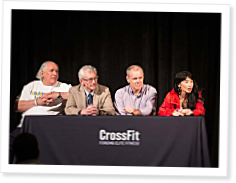
Updated consensus statement on hydration and hyponatremia published June 29 in Clinical Journal of Sport Medicine.
The dogma is pervasive: Dehydration is bad.
For more than a decade, a group of scientists from around the globe have been working to fight that doctrine. Their advice is simple: Drink only when you’re thirsty.
“Everybody has this little barometer in their brain that they were born with that measures the appropriate amount of sodium in your blood and the appropriate amount of water going through your circulation,” explained Dr. Tamara Hew-Butler, an associate professor of exercise science at Oakland University in Rochester, Michigan. “Inside (your brain), when you need water, you will get thirsty.”
Hew-Butler was among 16 scientists who wrote a consensus statement on hyponatremia that the Clinical Journal of Sport Medicine published on its website today.
Hyponatremia occurs when a person drinks so much hypotonic fluid—such as water or sports drinks—that blood-sodium levels are reduced. Symptoms can be as mild as dizziness and nausea or as severe as vomiting, seizures and coma. Because drinking excessive fluid can flood the lungs and brain, hyponatremia can be fatal.
The 18-page “Statement of the Third International Exercise-Associated Hyponatremia Consensus Development Conference, Carlsbad, California, 2015” summarizes the most current information on the prevalence, etiology, diagnosis, treatment and prevention of so-called exercise-associated hyponatremia (EAH) for medical personnel, athletes, athletic trainers and the general public.
No comments:
Post a Comment